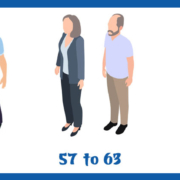Isometric Exercise Lowers Blood Pressure
This summer has seen several studies about exercise, so we’ll just continue with the flow from last week. The first study caught me by surprise: isometric exercise lowers blood pressure. When you do isometric exercises, you increase tension in a muscle without moving the joint, such as holding your leg still while you clench your thigh muscles; if you’ve got a wall, a chair, and a floor, you’ve got all you need. We don’t think of isometric, also called static exercise, as being effective in changing the dynamic flow of blood in the cardiovascular system. Let’s take a look at the study.
Researchers conducted a literature search of all published studies that examined the impact of any type of exercise on systolic blood pressure (SBP) and diastolic blood pressure (DBP.) They conducted a pairwise and network meta-analysis to see which exercise helped BP the most. The most important finding was that every form of exercise significantly reduced SBP and DBP when performed for two weeks and longer: aerobic exercise, dynamic resistance (weight) training, combined training, high-intensity interval training (HIIT), and isometric exercise.
When they compared the efficacy of the different forms, isometric exercise lowered SBP the most, followed, in order, by combined training, weight training, aerobic training, and HIIT.
To me, isometrics are somewhat easy to perform because it removes obstacles such as orthopedic issues or equipment. But why would it reduce blood pressure more than other modes of exercise? We’ll check that out on Saturday.
What are you prepared to do today?
Dr. Chet
Reference: British J Sp Med Online July 2023. doi: 10.1136/bjsports-2022-106503









